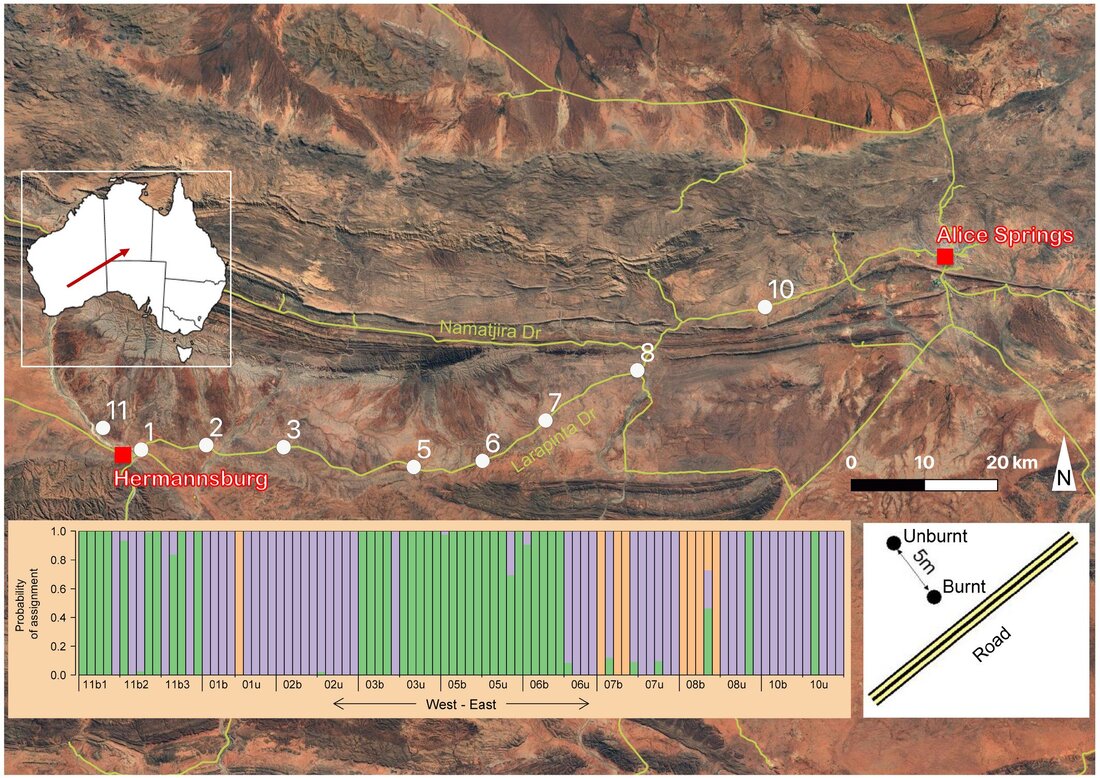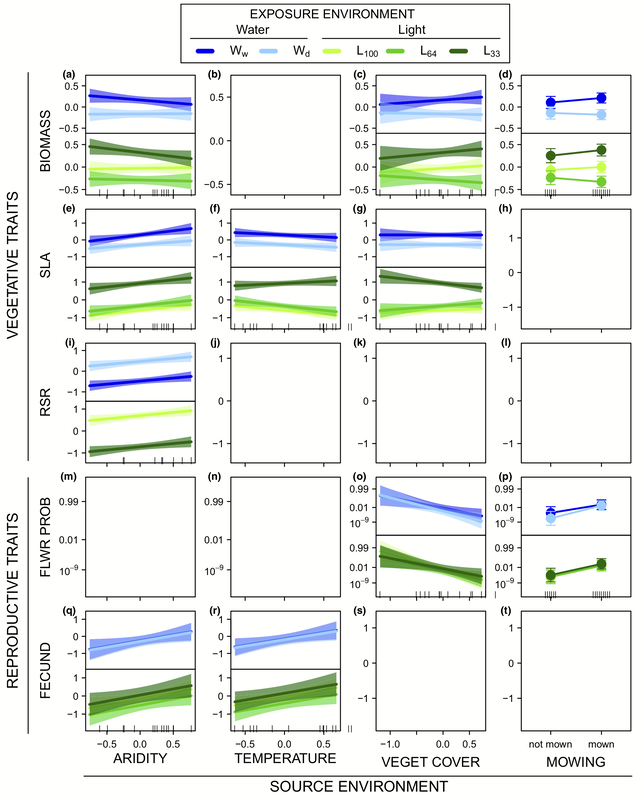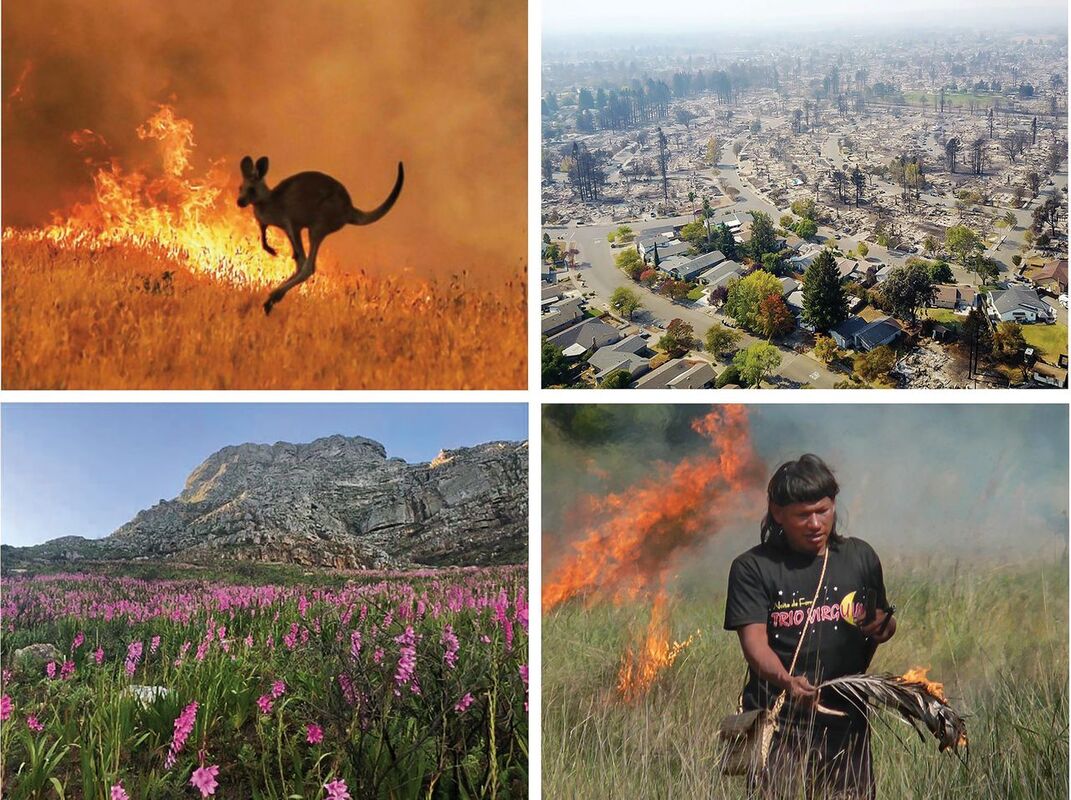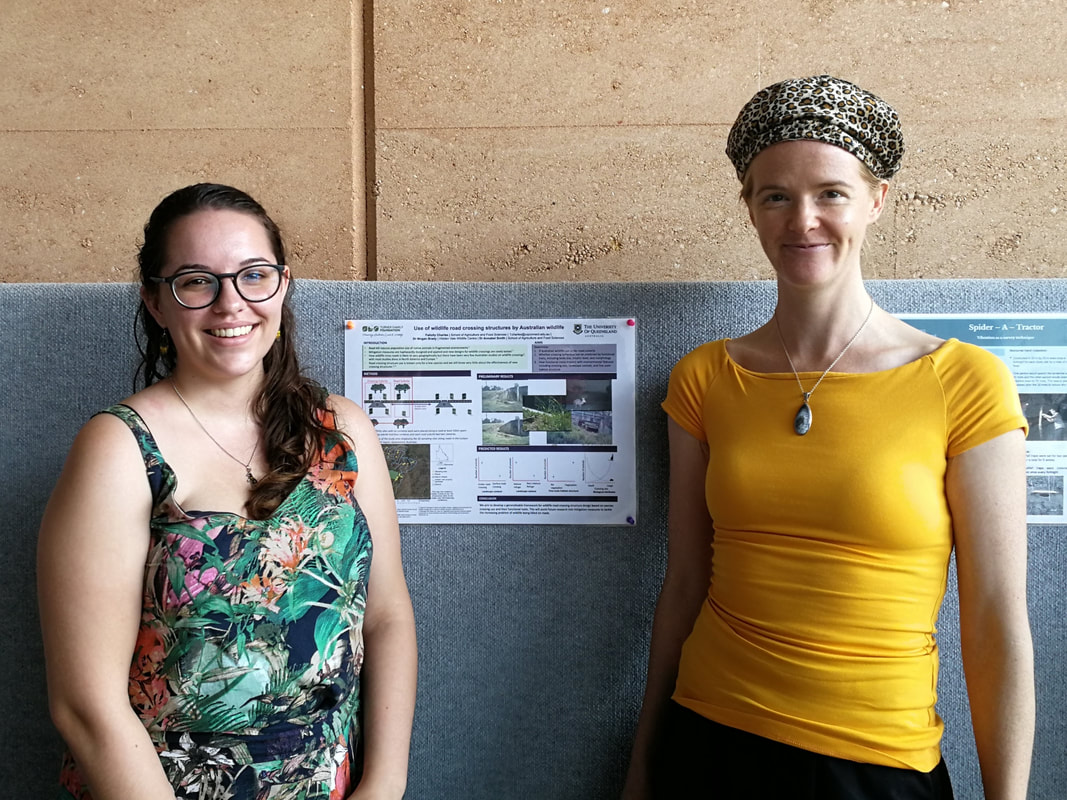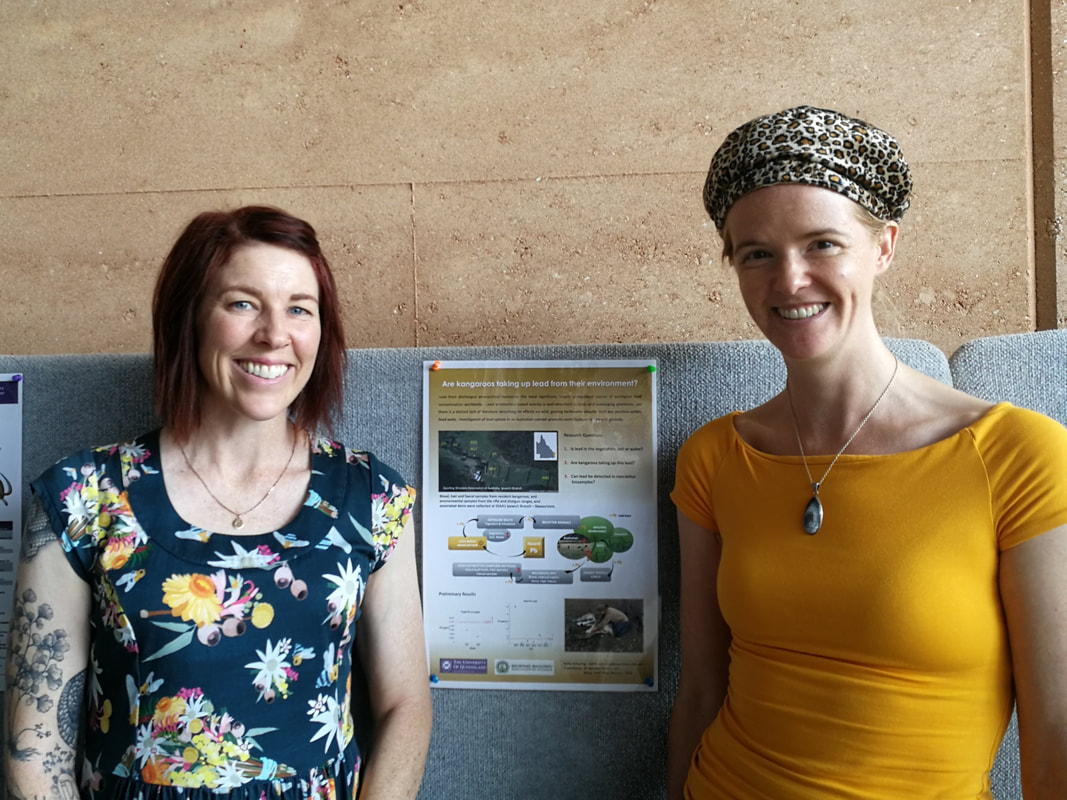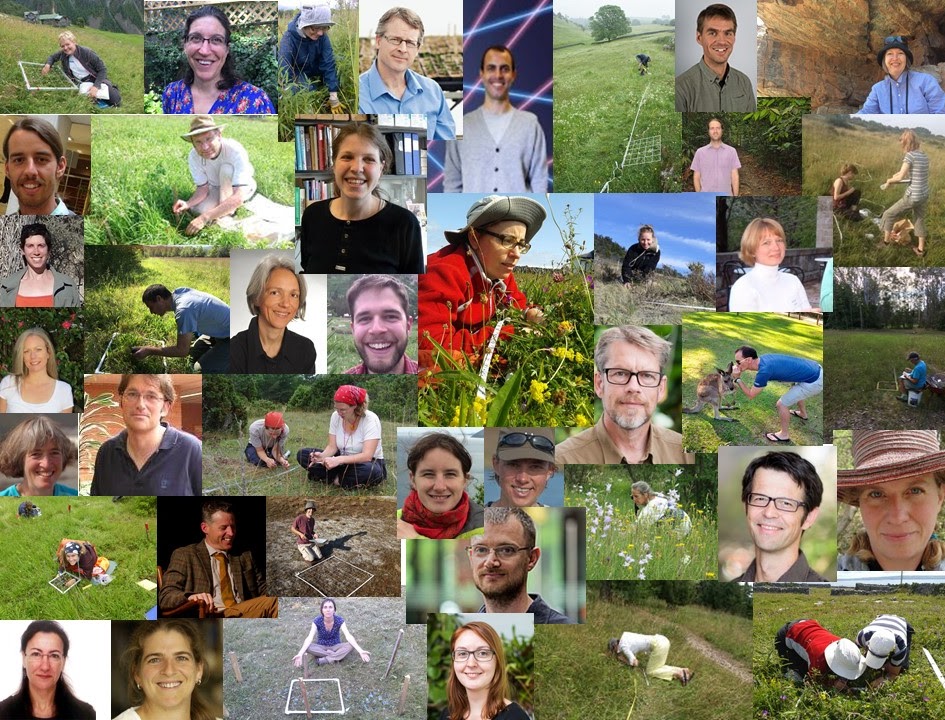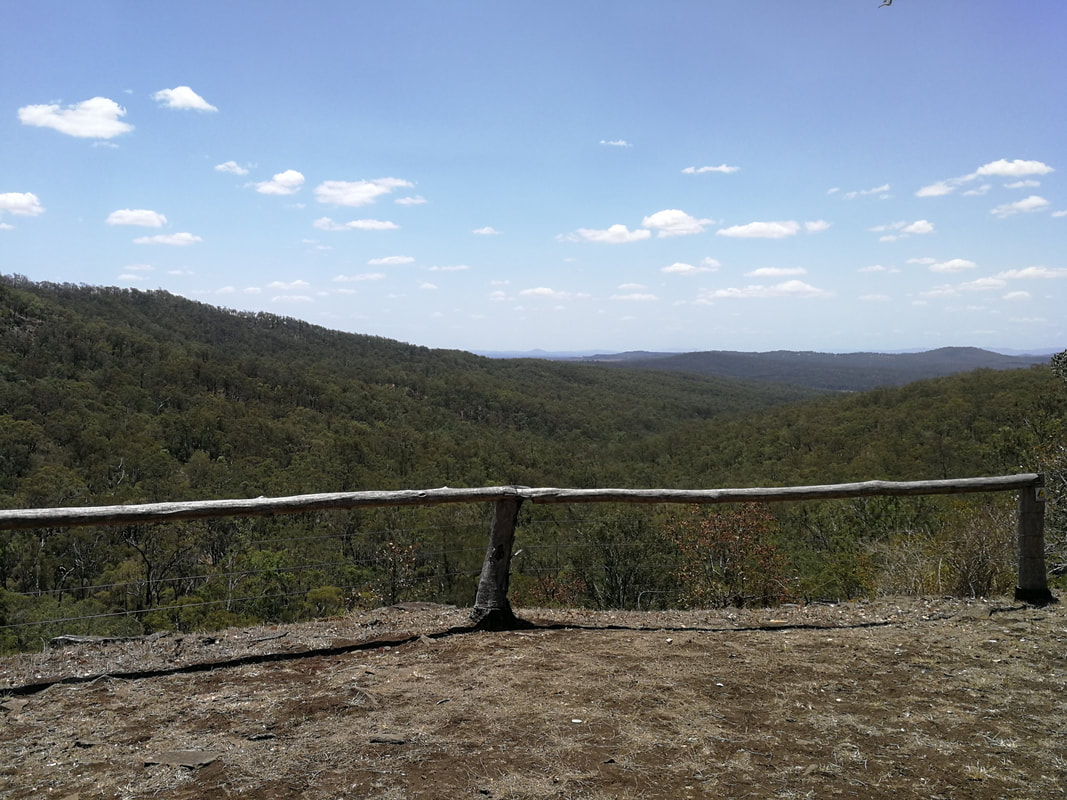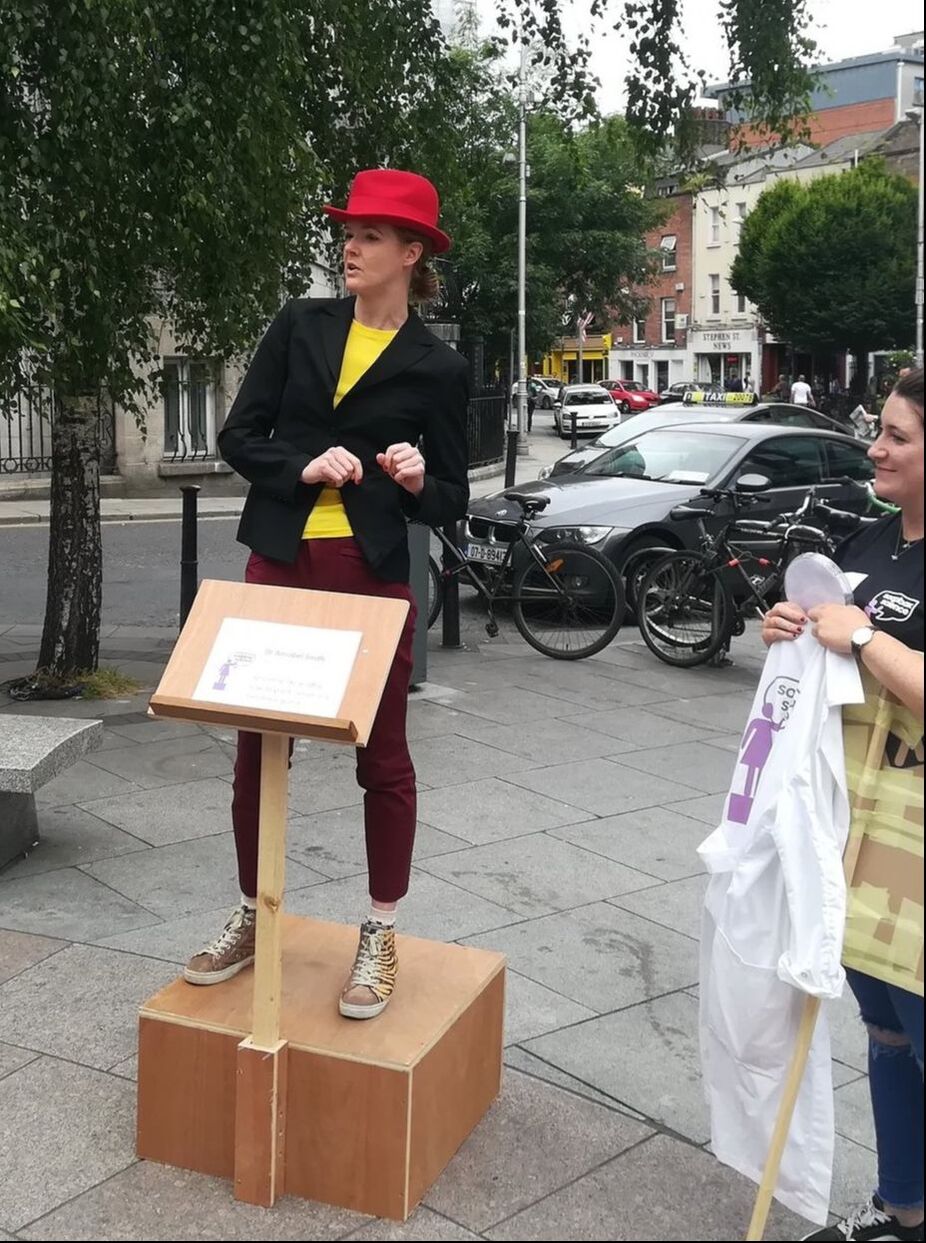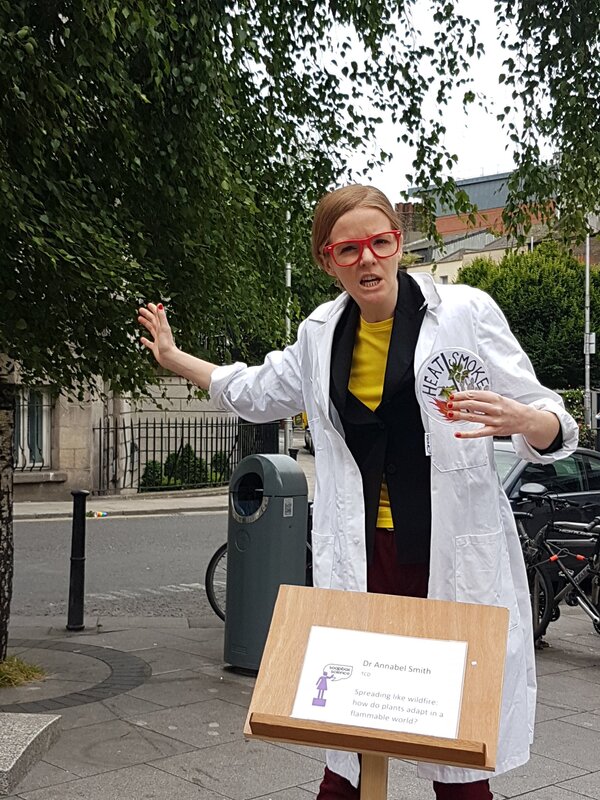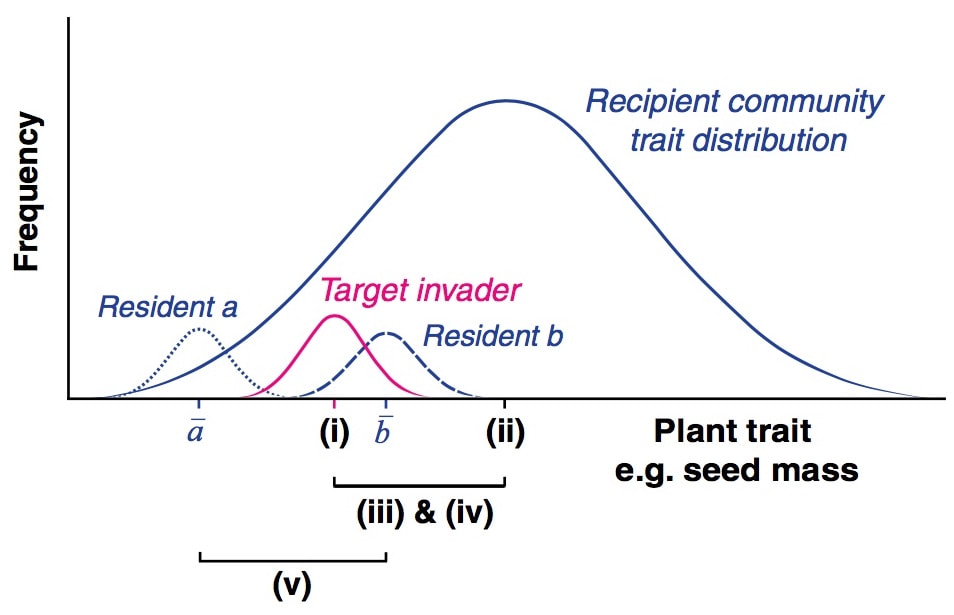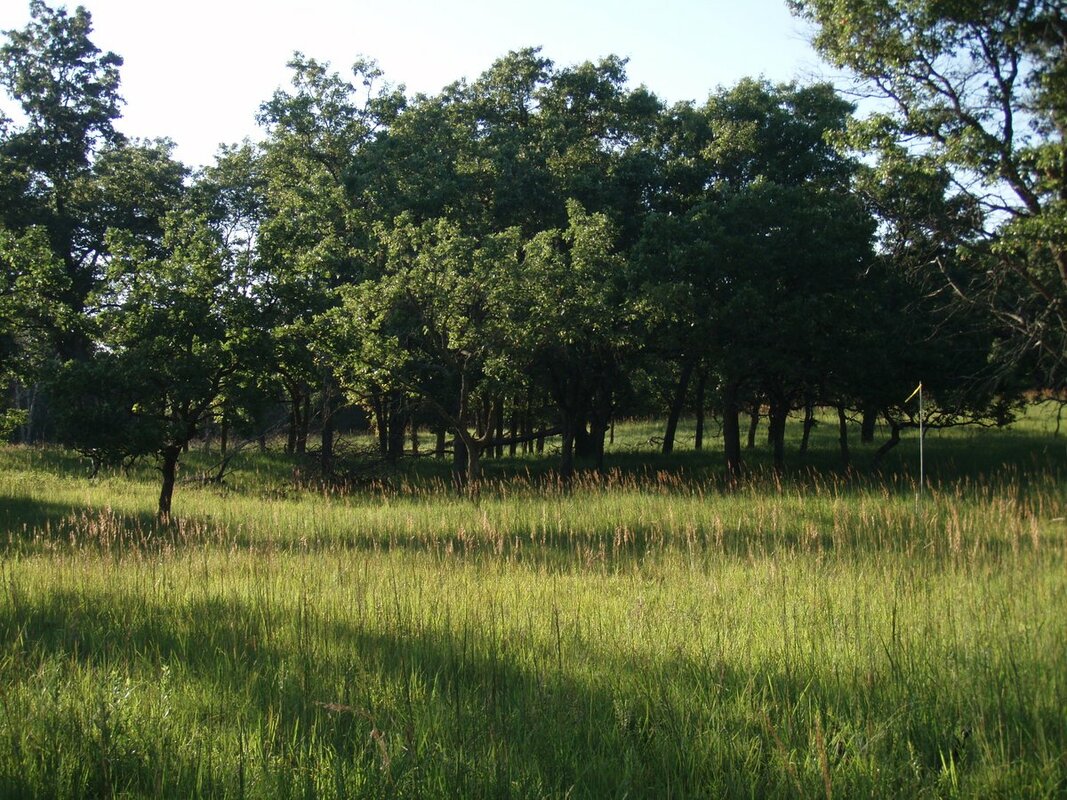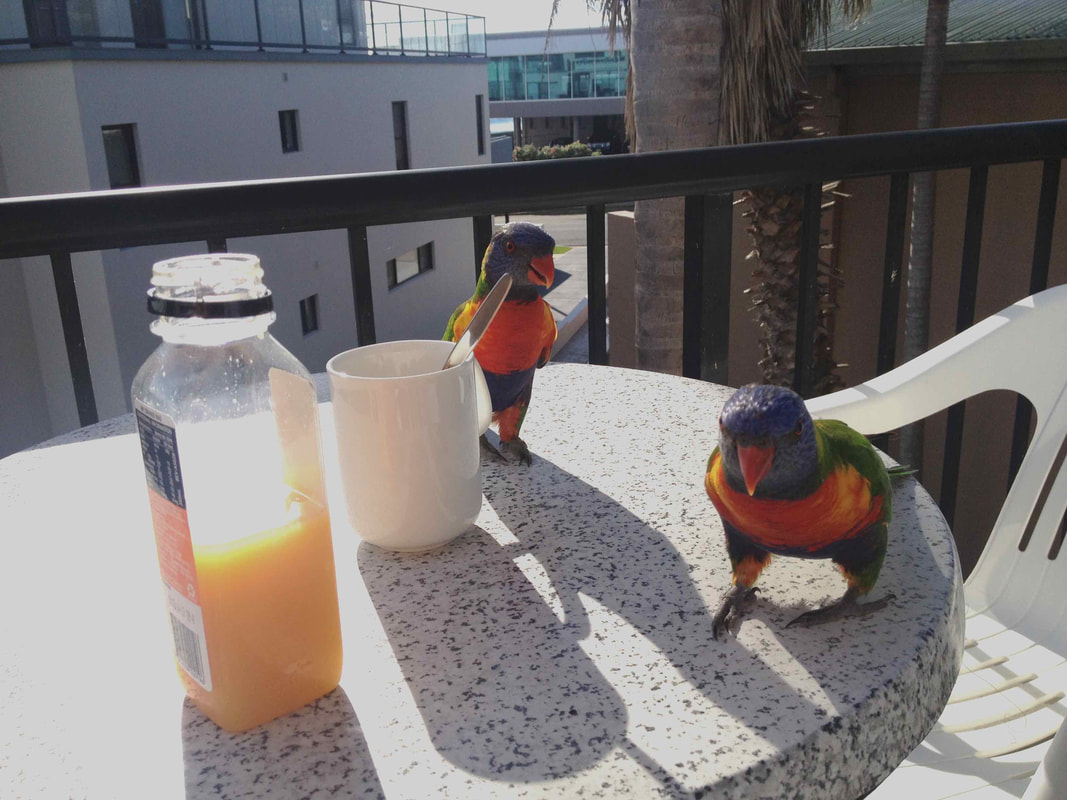In our new paper, led by UQ student Binyin Di, we found limited evidence that roadside burning consistently increased genetic diversity and adaptive potential in C. ciliaris; evolutionary and breeding history more strongly shaped genetic structure. Roadside burning could therefore continue to be used for managing biomass in this species, with continued monitoring. Our study provides a framework for detecting fire-related changes on a genetic level–a process that could be used as an early warning system to detect the invasive grass–fire cycle in future.
| Smith Ecology Lab |
|
|
March 2022: The invasive grass–fire cycle is a widely documented feedback phenomenon in which invasive grasses increase vegetation flammability and fire frequency, resulting in further invasion and compounded effects on fire regimes. Few studies have examined the role of short-term adaptation in driving the invasive grass–fire cycle, despite invasive species often thriving after introduction to new environments. In our new paper, led by UQ student Binyin Di, we found limited evidence that roadside burning consistently increased genetic diversity and adaptive potential in C. ciliaris; evolutionary and breeding history more strongly shaped genetic structure. Roadside burning could therefore continue to be used for managing biomass in this species, with continued monitoring. Our study provides a framework for detecting fire-related changes on a genetic level–a process that could be used as an early warning system to detect the invasive grass–fire cycle in future. Di B, Firn J, Buckley YM, Lomas K, Pausas JG, Smith AL (2022) The impact of roadside burning on genetic diversity in a high-biomass invasive grass Evolutionary Applications https://doi.org/10.1111/eva.13369
Sept 2021: My colleague Dr Jesus Villellas from our Trinity College Dublin days has recently published the next chapter in the Plantago lanceolata story, through the PLANTPOPNET network, led by Prof. Yvonne Buckley. Jesus is now at Museo Nacional de Ciencias Naturales in Madrid, Spain. Combining a multi-treatment greenhouse experiment with global observational field data of the short-lived herb Plantago lanceolata, we (1) disentangled genetic and plastic responses of functional traits to environmental drivers and (2) assessed how genetic differentiation and plasticity shape observational trait–environment relationships. Reproductive traits (more closely related to fitness) showed distinct genetic differentiation that largely determined observational patterns. Vegetative traits showed instead higher plasticity and opposite genetic and plastic responses, masking the genetic component underlying field-observed trait variation. Check out the paper :
Villellas J, Ehrlén J, Crone EE, Csergő AM, Garcia MB, Laine A-L, Roach DA, Salguero-Gómez R, Wardle GM, Childs DZ, Elderd BD, Finn A, Munné-Bosch S, Bachelot B, Bódis J, Bucharova A, Caruso CM, Catford JA, Coghill M, Compagnoni A, Duncan RP, Dwyer JM, Ferguson A, Fraser LH, Griffoul E, Groenteman R, Hamre LN, Helm A, Kelly R, Laanisto L, Lonati M, Münzbergová Z, Nuche P, Olsen SL, Oprea A, Pärtel M, Petry WK, Ramula S, Rasmussen PU, Enri SR, Roeder A, Roscher C, Schultz C, Skarpaas O, Smith AL, Tack AJM, Töpper JP, Vesk PA, Vose GE, Wandrag E, Wingler A, Buckley YM (2021). Phenotypic plasticity masks range-wide genetic differentiation for vegetative but not reproductive traits in a short-lived plant. Ecology Letters, DOI: https://doi.org/10.1111/ele.13858, PDF. Nov 2020: Last summer, many Australians were shocked to see fires sweep through the wet tropical rainforests of Queensland, where large and severe fires are almost unheard of. This is just one example of how human activities are changing fire patterns around the world, with huge consequences for wildlife.
In a new paper, led by Dr Luke Kelly, and published in Science, we reveal how changes in fire activity threaten more than 4,400 species across the globe with extinction. This includes 19% of birds, 16% of mammals, 17% of dragonflies and 19% of legumes that are classified as critically endangered, endangered or vulnerable. See the paper, or read the summary in The Conversation. Kelly LT, Giljohann KM, Duane A, Aquilué N, Archibald S, Batllori E, Bennett AF, Buckland ST, Canelles Q, Clarke MF, Fortin M-J, Hermoso V, Herrando S, Keane RE, Lake FK, McCarthy MA, Morán-Ordóñez A, Parr CL, Pausas JG, Penman TD, Regos A, Rumpff L, Santos JL, Smith AL, Syphard AD, Tingley MW, Brotons L (2020). Fire and biodiversity in the Anthropocene. Science 370, eabb0355. Nov 2020: Two of my honours students presented their work at the Australian Mammal Society Conference this month. Felicity Charles presented preliminary results on whether or not wildlife use under-road culverts. Kellie Schuring presented some preliminary results on lead poisoning of kangaroos and their habitats on a shooting range. Although the conference was online, we attended at Hidden Vale wildlife sanctuary with other delegates, which almost made it feel like a real, pre-covid conference.
The leopard hat and Felicity and Kellie's jungle outfits were part of the 'ecology' theme of the conference! Feb 2020: OK, the title might be a biiiiit of an exaggeration... But what I'm trying to say is that some plant species become globally invasive because multiple introductions mix their genetic stock, making them highly adaptable. This means they're no longer beholden to environmental constraints that existed in their native range. This is what me and a team of 48 scientists found when we set out to test some ecological theories about how plants adapt to new environments, focussing on changes in demography and dispersal. PLANTPOPNET, established in 2015 by Prof. Yvonne Buckley and an international steering committe, provided the gobal network to undertake such an ambitious quest, using Plantago lanceolata as a model species. We were a bit shocked to find that some of the ‘rules of ecology’ simply didn't apply to this species. For example - Plantago lanceolata had no regard for the pesky ecological prediction that genetic diversity will increase with population size and fecundity. And, while the species was strongly associated with environmental gradients in it's native Europe, outside of that range, it didn't matter what kind of environment they were living in, Plantago almost always had high genetic diversity and high adaptability. For more information, check out the paper, published in Proceedings of the National Academy of Sciences USA.
And see the media reports here and here. Oct 2019: After three action-packed years in Ireland, I've arrived back in Australia to start a new position as Lecturer in Wildlife Management in the School of Agriculture and Food Science (SAFS) at University of Queensland's Gatton Campus. I was welcomed to a region ravaged by bushfire; I drove through thick smoke as fires blazed right up to the edge of the highway; smoke hung in the air for several of my first few days. The effects of the drought are visible everywhere, even to someone not yet familiar with the landscape. It was a shocking welcome for a fire ecologist.
Despite the concerning conditions, I'm super happy to be at Gatton and looking forward to teaching and working with my new collegues in SAFS. I'm developing new research projects in wildlife, fire ecology and environmental management. Students interested in these areas can contact me to discuss potential research projects. I'll have a new UQ website soon, but will probably keep this one as an external research site... This site needs an overhaul and is currently a bit out-of-date, so please email me for more info on my current research or to develop new collaborations.
Check out the video for a short intro, or read the paper for the nitty gritty details... Driscoll DA, Smith AL, Blight SR, Sellar I (2019). Interactions among body size, trophic level and dispersal traits predict beetle detectability and occurrence responses to fire. Ecological Entomology 10.1111/een.12798 June 2019: A scientist wears many hats: communicator, technician, advocate, theoretician, practitioner, teacher, student, mentor, mentee. It's one of the challenging parts of being a researcher, but also one of the best. It means it's never boring* and you can exercise your creativity. This job suits someone with multiple aspects to their personality. This was something I tried to convey in my recent public talk at Soapbox Science Ireland. Speaking to the general public on a Dublin city street, I spoke about the influence of climate change on fire frequency and what this means for plant evolution. It was a great opportunity to link what I do in the lab to the growing global environmental movement; acknowledging the important role that the general public can play in protecting nature. * a wise scientist once told me that if you're not bored yet, you don't have enough data.
Feb 2019: Ever wondered what traits make a plant species invasive? Is it small propagule size? High individual growth rate? Or just good old-fashioned height? Jane Catford at Kings College London had pondered these questions. But she had also wondered: what makes a community invasible? And can we identify interactions between the traits of invaders and recipient communities that help explain biological invasions? To answer these questions, Jane and her team at Cedar Creek Ecosystem Science Reserve, Minnesota USA collected trait data from a plant community with 164 taxa, where 50 invasive species had been experimentally added in 1992. I joined Jane's team in 2015 to lead the statistical modelling for this project. We analysed the data using multi-species, hierarchical generalised linear models. These models allowed us to analyse invasion as a process, incorporating data from all invaders into the same model, while allowing the response of each invader to vary across environmental gradients (access the code here). Invader-community interactions changed over a 20 year period, showing that invasion is context-dependent and long-term experiments are required to comprehensively understand plant invasions. Check out the paper to see the full story. Catford JA, Smith AL, Wragg P, Clark AT, Kosmala M, Cavender-Bares J, Reich PB, Tilman D (2019). Traits linked with species invasiveness and community invasibility vary with time, stage and indicator of invasion in a long-term grassland experiment. Ecology Letters doi.org/10.1111/ele.13220. Dec 2018: A couple of curious Rainbow Lorikeets visited me as I was eating breakfast in Mollymook, on the south coast of New South Wales, Australia. I was there to co-host a workshop on movement ecology with Pia Lentini and Philip Barton, which brought together staff from the Australian Government Environment Department and a group of international scientists.
Animals and plants (their pollen and seeds) need to move across landscapes, but cities, crops and roads and often get in their way. Unfortunately, it's difficult to get data on animals and plants when they move because it's often confined to a brief burst of activity, or the species are small and elusive so we can't see them moving. So movement is important but we don't know much about it, which makes conservation planning difficult. How do we allocate resources to restoration and habitat protection in a way that will preserve the movement of species? Our paper arising from the Mollymook workshop presents a new framework for managing uncertaintainty in movement knowledge when making environmental decisions. Check it out here! Smith AL, Kujala H, Lahoz-Monfort JJ, Guja LK, Burns EL, Nathan R, Alacs E, Barton PS, Bau S, Driscoll DA, Lentini PE, Mortelliti A, Rowe R, Buckley YM (2018). Managing uncertainty in movement knowledge for environmental decisions. Conservation Letters doi.org/10.1111/conl.12620 |
Dr Annabel Smith
Lecturer in Archives
April 2025
|
Site powered by Weebly. Managed by HostGator
